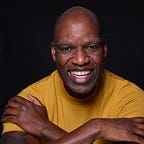11 Reasons Why 1983 Was the Best Year in ’80s Music
An era of hot-shot U.S. chart debuts, from Madonna to R.E.M. to U2.
7 min readNov 16, 2018
Unlike many in my 40-to-50 age group, when it comes to music, I consider myself more a child of the ’70s than the ’80s. That’s not to say the ’80s weren’t pivotal to the evolution of my obsession with tunes. It was the decade during which I decided I wanted to be a…
